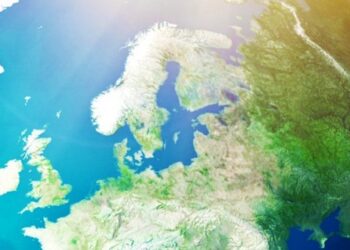Pirates ususally are arrested, are disarmed and then they are free to go back
S4S: Can you tell us about the situation in the area of Gulf of Aden and the Indian Ocean, these days?
AP : I will try to give you a clear picture of what is happening in the area. I t was expected since 2009 that the pirates due to the strong presence of warships in the Gulf of Aden will expand eastwards, towards the deep Indian Ocean. The reason is that the naval units of the three organizations, EU, NATO and combined maritime forces which are based in Bahrain, have mandate to patrol up to 600 nautical miles off Somalia coast. From 600 up to 1400 nautical miles, there is not any warship dedicated to antipiracy operations unless there is any other passing warship in the area. As a result, most of the ships don’t use the northbound or the southbound route from Persian Gulf towards Mauritius or Cape of Good Hope, but they deviate crossing India’s coast.
S4S: Are there any piracy trends that you have identified?
AP : The first semester of 2011 we had 163 piracy attacks as compared to 104 in 2010 but the ratio is better regarding attacks and successful attacks. So in 2009, one out of three attacks was successful, in 2010, one out of four attacks and currently one out of seven attacks is successful due to the measures that have been taken by the vessels, i.e. self-protection measures. Regarding the hostage period, in 2010 the average was about 155 days and the average ransom was $5.4m. Also, from confiscated GPS devices we know how the skiffs are acting in the Gulf of Aden. They leave north Somalia coast at a given day in the afternoon, they cross the Gulf of Aden and they arrive early morning hours of the next day in the IRTC area, where they’re waiting for the attacks. This is the reason that most of the attacks are taking place in the early morning. Regarding the Indian Ocean, the situation is much more difficult. They use fishing trawlers as motherships and also they use high jacked vessels as motherships. The reasons they use high jacked vessels as motherships is logistical support, that the ships can go through rough seas to reach calmer seas and after a successful attack, they don’t have any problem to be attacked by a naval unit in the area. Also, sometimes they create a deception to other passing merchant vessels. There are merchant vessels in the area that they’re not aware of the presence of high jacked vessels, even through AIS or even through other intelligence.
S4S: What are the naval units in the area?
AP : In the Gulf of Aden, there are three organizations, NATO, EU and Combined Maritime Forces, acting only for patrolling either in the Gulf of Aden or east of Somalia. Also there are national convoys which are conducted by individual units on a national basis. There is one coordinator on a monthly basis, NATO, EU or combined maritime forces. Each organization, allocates every week the ships available. In order to have a very good patrolling in the Gulf of Aden we need twelve ships but on a daily basis there are only six to seven. The rest of the ships are east of Somalia. They try to block the exit of mobile camps from east Somalia towards the piracy operation area. In 2010, 140 piracy attacks were blocked.
S4S: What is your suggestion? How can we stop or at least protect the vessels from piracy?
AP : A major problem in the area is the lack of prosecution. The pirates are arrested, are disarmed and then they are free to go back. One solution is the national convoy. It’s not a panacea. Pirates attack even a national convoy. Other solutions are vessel’s hardening or citadels. My advice is that if the crew retreats in the citadel and is in the Indian Ocean, they have to travel and not stop. If they stop, the mothership will approach them and will bring more pirates with the necessary tools and they will break in the citadel. Also there is the solution of armed or unarmed teams on board. I’d say, don’t rely on the statistics, fortify your vessels.
Rear Admiral Antonios Papaioannou is Past Commander, EUNAVFOR, Diaplous Maritime Services.
The above interview is adapted from Mr Papaioannou ‘s presentation at 2nd Safety4Sea Forum































































